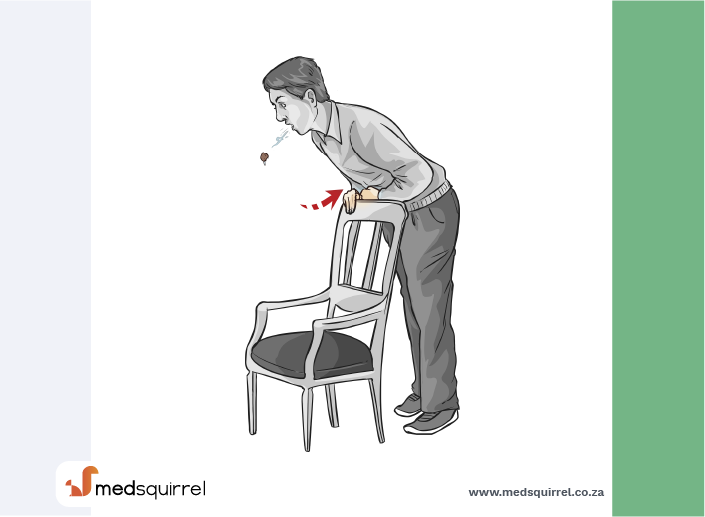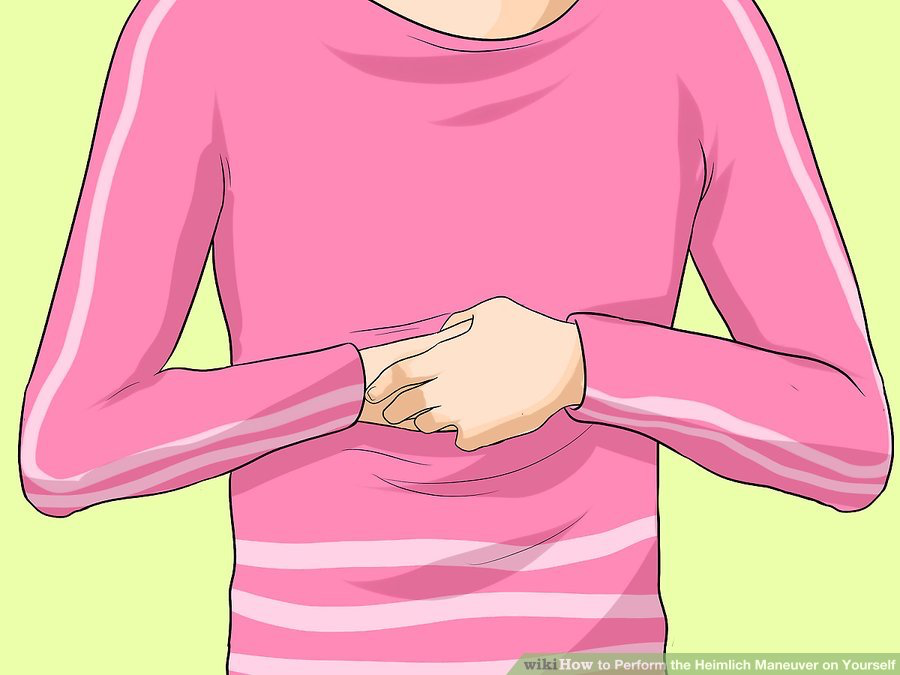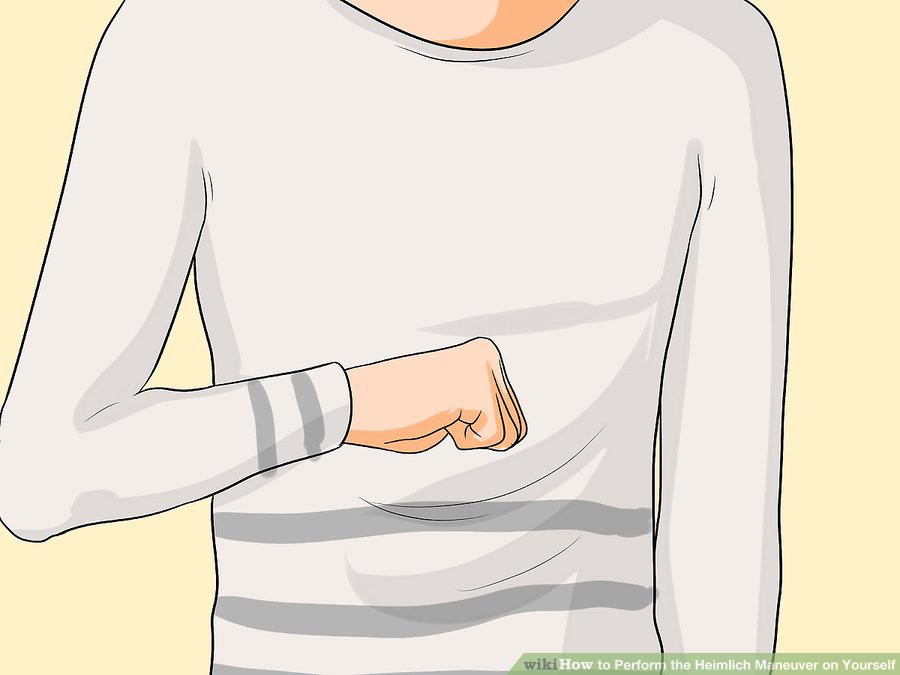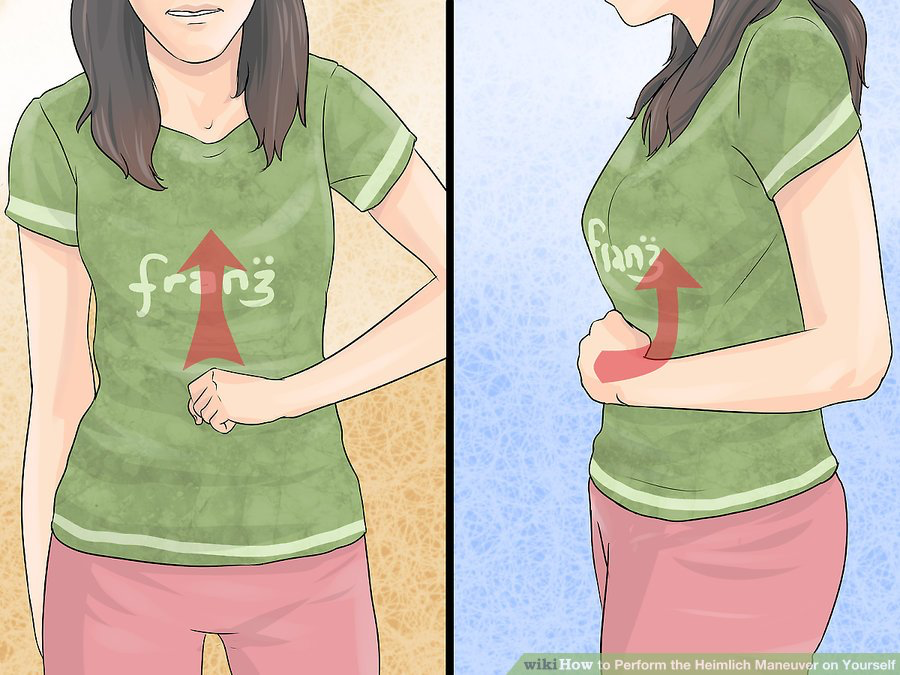Back First Aid Explained
How to Perform the Heimlich Maneuver on Yourself

We have selected the following expert medical opinion based on its clarity, reliability and accuracy. Credits: Sourced from the website wikiHow. Please refer to your own medical practitioner for a final perspective, assessment or evaluation.
Overview
Choking occurs when a person gets a foreign body, usually food, stuck in his or her windpipe, which prevents normal breathing. Choking can result in brain damage or death, and serious harm can happen within minutes. The Heimlich Maneuver is the most common technique used to save a choking person. If no one else is around who is able to assist you, you can save yourself. Follow a few simple steps to learn how to perform the Heimlich Maneuver on yourself.
Part 1: Preparing to Perform the Heimlich Maneuver
1. Try to cough out the foreign object
If you feel like you have something caught in your throat, you should try to cough it out. If you can cough forcefully enough to get it out, then you should not have to perform the Heimlich maneuver. If you cannot get the object out by coughing and are struggling for air, you need to act quickly, especially if you are alone.
- You need to expel the obstruction before you lose consciousness.
- Even through the Heimlich maneuver, continue to intentionally cough.
2. Make a fist
- You need to make sure that your hand is in the right place so you can ensure that you don't hurt your ribs and are at the most opportune place for expelling the object.
- This fist placement is the same as in the traditional Heimlich maneuver.
3. Hold the fist with your other hand
Once you have your fist in place, you need to add your other hand for leverage. Open your other hand and place it over the fist you have on your stomach. You need to make sure that the fist is in the center of your hand.
- This will allow you to push harder when you start the Heimlich maneuver.

Part 2: Performing the Heimlich Maneuver on Yourself
1. Drive your fist in and up
To try to get the foreign object dislodged, you need to push your fist and hand into your diaphragm or stomach area. Use a quick j-shaped motion, in and then up. Repeat multiple times.
- If this does not dislodge the foreign object very quickly, you need to try to add more force with a stable object.
2. Add force with a stable object
In your immediate area, you need to find a stable object that is about waist high that you can bend over. A chair, a table, or a counter top will work well for this. With your hands still clasped in front of you, bend over the chair, table, counter, or other solid object. Brace your fists between the chair and your abdomen and drive your body against the solid object.
- This will greatly increase the force you apply to your diaphragm, which will be more effective to help dislodge seriously stuck foreign objects.
3. Repeat
You may not be able to dislodge the object during the first try. You need to quickly repeat pushing yourself onto the stable object until the object is removed. You should return to normal breathing once it is removed.
- Although it is very scary, it is better if you stay calm. Panicking will only increase your heart rate and need for air, which will make it worse.
- Once you have it dislodged, sit down and catch your breath.
- If you find that you are uncomfortable or your throat is sore, you may need to see your doctor.
- If you cannot get it dislodged, call emergency services (see "EMERGENCY NUMBERS" above).
_______________________________________________________________________________________________________________________
Are you a healthcare practitioner who enjoys patient education, interaction and communication?
If so, we invite you to criticise, contribute to or help improve our content. We find that many practicing doctors who regularly communicate with patients develop novel and often highly effective ways to convey complex medical information in a simplified, accurate and compassionate manner.
MedSquirrel is a shared knowledge, collective intelligence digital platform developed to share medical expertise between doctors and patients. We support collaboration, as opposed to competition, between all members of the healthcare profession and are striving towards the provision of peer reviewed, accurate and simplified medical information to patients. Please share your unique communication style, experience and insights with a wider audience of patients, as well as your colleagues, by contributing to our digital platform.
Your contribution will be credited to you and your name, practice and field of interest will be made visible to the world. (Contact us via the orange feed-back button on the right).
Disclaimer:
MedSquirrel is a shared knowledge, collective intelligence digital platform developed to share medical knowledge between doctors and patients. If you are a healthcare practitioner, we invite you to criticise, contribute or help improve our content. We support collaboration among all members of the healthcare profession since we strive for the provision of world-class, peer-reviewed, accurate and transparent medical information.
MedSquirrel should not be used for diagnosis, treatment or prescription. Always refer any questions about diagnosis, treatment or prescription to your Doctor.





